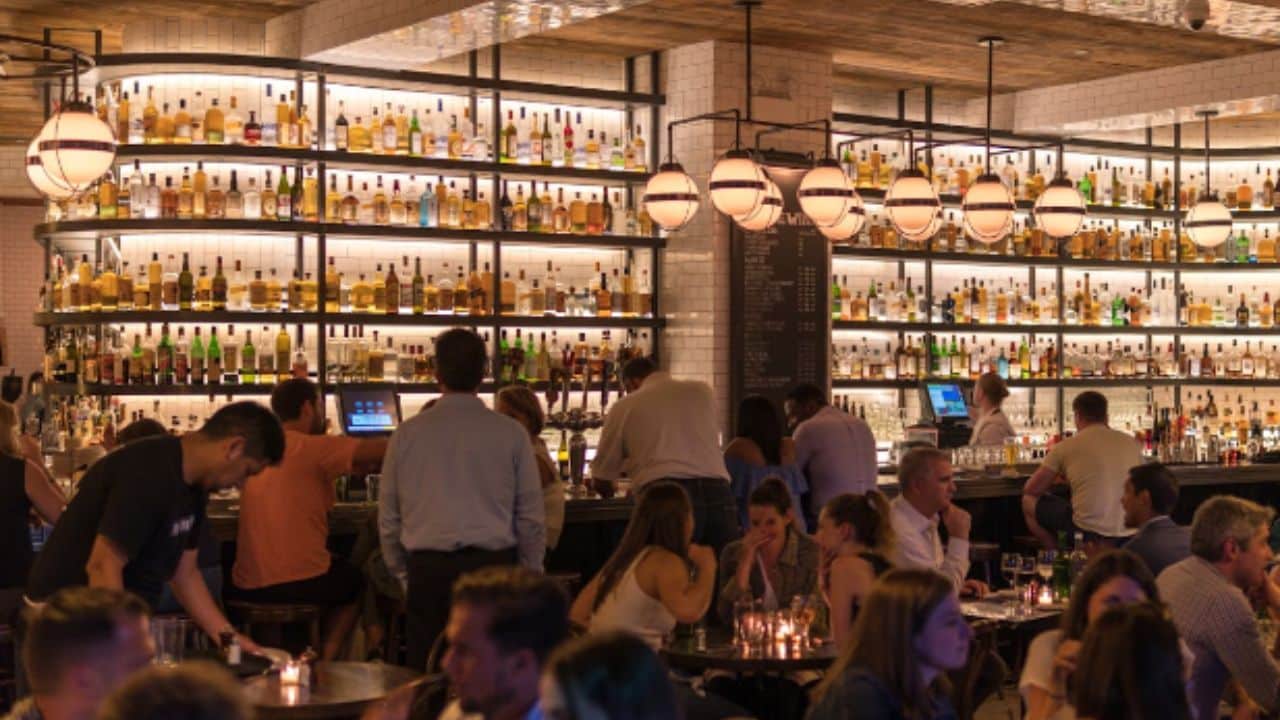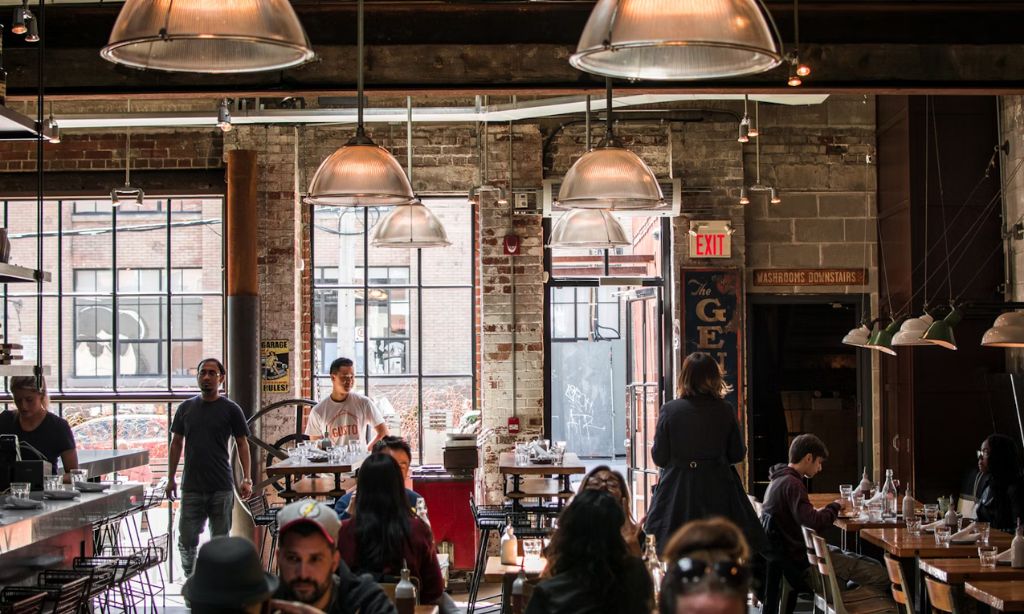According to the 2024 State of the Restaurant Industry report, 45 percent of restauranteurs expect competition to be more intense this year than in 2023.
Nearly half of consumers also take a wait-and-see approach to spending. Restaurants that offer a solid value proposition for dining out can break this holding pattern.
As the industry becomes more hyper-competitive, your restaurant must elevate its marketing strategies to stand out.
However, a solid value proposition goes beyond your menu.
So, what tactics can propel your restaurant’s success beyond the menu’s appeal? Let’s find out below.
Launch Loyalty Programs To Encourage Repeat Business
Loyalty programs that offer incentives or rewards for purchases or referrals help drive repeat business.
To create loyalty programs, you must first determine what programs make the most sense for your restaurant. You may send emails or text messages with exclusive discounts, integrate a points program into your website or mobile app, or offer traditional gift cards.
Whatever you choose, ensure the structure is straightforward for customers to understand. You must also consistently inform them of the benefits to encourage participation.
Optimize Your Website With SEO
Many diners browse restaurant websites before choosing where to eat. Your site is also the first contact point for some prospects.
Thus, your website is one of your digital marketing assets. However, it only works if people can easily find it on search engines.
With search engine optimization (SEO), you can bolster your website’s chances of appearing on Google’s top results.
Here are SEO strategies you must adopt:
- Mobile optimization
- Craft high-quality SEO-friendly content
- Enhance website loading speed
- Build backlinks from authoritative sites
Furthermore, you can use SEO for local search optimization.
For instance, if you’re a Los Angeles-based restaurant, using keywords like “restaurant in Los Angeles,” “Los Angeles restaurants,” or “top restaurants in Los Angeles” can help amplify your relevant local search visibility. These terms can connect you with nearby customers who are searching for your offers.
Don’t have a website?! Don’t worry! With the help of a restaurant website builder, you can swiftly design and launch your very own site, paving the way for more orders. It’s never been more effortless to create a website for your restaurant.
Double Down on Social Media Marketing
Social media networks let you interact with customers. They can also help foster an emotional connection with your brand.
Here’s how to double down on your social media marketing efforts:
- Enhance your restaurant’s image by sharing mouthwatering and high-quality food photos. Capitalize on popular food hashtags to boost the posts’ engagement.
- Keep your profiles active by posting announcements whenever you update operating hours or host events.
- Highlight special discounts on special occasions. For example, you can pick a lesser-known “holiday,” like International No Diet Day, and offer promos to entice customers to celebrate the day.
- Run social media ads, like Instagram carousel posts, with a call-to-action link (e.g., Order Now) pointing to your website, delivery, or pickup service.
Provide Online Ordering
Most consumers now expect businesses to have online ordering options. They want a smooth ordering experience that will keep them coming back.
Online ordering can reduce the need to take phone orders, which frees up some of the staff’s workload. It also lets customers order and have their food delivered at home or in the office, saving time and money.
You can set up online ordering systems on your in-house website, a third-party delivery service like Uber Eats, or a first-party provider with a point-of-sale system (POS) like SpotOn.
Integrate Restaurant Tech Solutions
Restaurant technologies help enhance operational efficiency, enrich customer service, manage inventory, and curtail employee turnover.
Besides website and online ordering platforms, other restaurant technologies to invest in include:
- Handheld POS systems – Compact devices that allow your staff and customers to make transactions at the table
- QR Codes – Diners scan these codes to access your menu, place orders, or pay quickly
- Self-Order Kiosks – Touchscreens that let guests place orders independently, which can ensure accuracy and reduce waiting time
- Robot Assistants – AI-powered machines that can assist in cooking, serving, cleaning, and welcoming guests
- Augmented and Virtual Reality – Technologies that can provide virtual experiences of your food and restaurant ambiance
- Restaurant Management Software – A comprehensive platform that manages orders, reservations, staff scheduling, table management, customer relationships, online ordering, and accounting
Get Listed on Online Business Directories
Online directories like Google Business Profile are websites with business listings based on services, industries, niches, locations, and products. They are submission-based channels where you submit your information to get listed.
They also organize top businesses on search results when consumers search for services.
To get listed on restaurant-focused online directories, note the following:
- Ensure your contact information is consistent. Update it when needed.
- Add your social media and website links.
- Write a compelling “About Us” section.
- Include high-quality photos and videos of your menu and restaurant.
Host Enticing Events
Hosting events helps bring new customers and encourage repeat business. It can be a watch party or local brand partnership for a unique experience.
You can even host digital events like webinars and livestreams. You can livestream a cooking class, a new menu reveal, or an exclusive product launch.
Remember that whichever event you host depends on your target audience’s interests.
Sell Branded Merchandise
Selling branded merchandise can help amplify brand awareness and diversify income streams.
You can sell t-shirts, hats, tumblers, glassware, and cookbooks to attract customers who love collectibles.
For instance, Shake Shack sells an apparel line that includes hoodies, sweatpants, beanies, crewnecks, socks, hats, t-shirts, and baby onesies.
However, apparel isn’t the only way to perform well in merchandising. You can also sell pantry items like bottled sauces, dry goods, and at-home meal kits.
Encourage Customers To Leave Online Reviews
Online reviews affect your restaurant’s reputation. They’re also among the first things prospects check before choosing a dining place.
Some ways to encourage online reviews include:
- Encourage customers to leave reviews through emails, before they leave the restaurant, or on receipts.
- Use QR codes to make your review forms or platforms easily accessible.
- Offer incentives in exchange for reviews.
- Respond to all reviews to showcase your commitment to making customers feel heard and valued.
Leverage Email Marketing
Email marketing is a direct marketing tactic to inform customers and promote specific products.
The types of marketing emails include:
- Newsletters
- Welcome emails
- Re-engagement emails
- Feedback and survey emails
- Milestone emails (e.g., anniversaries or customer birthdays)
Leveraging this marketing strategy can provide the following benefits:
- Boost your website traffic
- Reach the right customers at the right time
- Personalization and segmentation
Remember to include an opt-in checkbox on your sign-up forms so customers can consent to receiving emails.
Collaborate With Food Influencers
Collaborating with food influencers is called restaurant influencer marketing. This marketing tactic can be a fresh, more personalized approach to increasing brand awareness.
Food influencers can make customers feel the culinary experience through screens in the following ways:
- They can share captivating stories about your restaurant while exploring your area. For example, a famous influencer might encounter your limited-time offers and share them on their social media channels.
- They can post compelling photos of your food. For instance, a dessert influencer expertly photographs your pastries with praise in captions, which can be more enticing than menu descriptions.
- They can publish short or long-form food review videos. A TikTok or YouTube star could feature your restaurant and showcase their dining experience.
- They can host live streams. A Facebook or Instagram live of a famous chef cooking your signature dishes.
However, you can’t just work with any influencer. You must consider the following aspects:
- Alignment of the influencer’s niche with your brand (e.g., partnering with a vegan influencer if your restaurant promotes plant-based food)
- Authentic connection with followers, regardless of follower count
- A passion for food and culinary experiences
Make the Dining Experience Interactive
Excellent customer service helps make the dining experience interactive.
The interactions can be as simple as saying, “Hello, welcome to our diner,” or “Hello, welcome back!” This attentiveness can make the customers feel valued.
First-time customers also want to feel they’re in good hands as they enter your restaurants. They should be able to ask questions without fear or anxiety.
Engage With Local Communities
Local community engagement can help establish a positive brand image in your area.
You can participate in community events, sponsor charities or cultural activities, or offer special promos or menus related to these causes and events.
Not only do these show support for the community, but they also introduce your brand to the participants, potentially broadening your customer base.
Maximize Your Restaurant’s Profitability
Standing out in the restaurant industry requires a dynamic marketing approach beyond the menu. Innovative and time-tested strategies ensure you can exceed customer expectations.
At the same time, embracing technology can create unique brand experiences and help you thrive in the digital marketplace.
Remember that the goal is to maximize profitability so you can turn every dining experience into a growth opportunity.









































